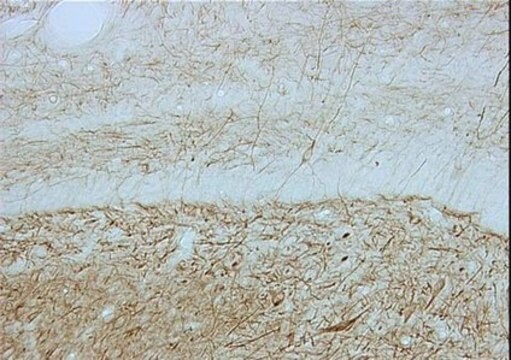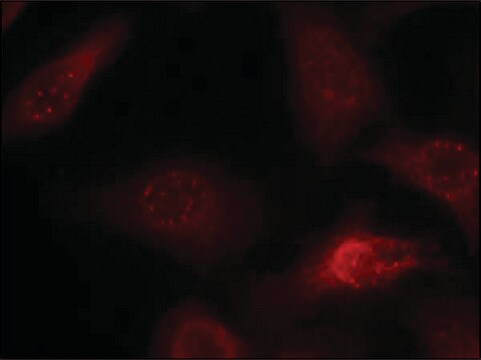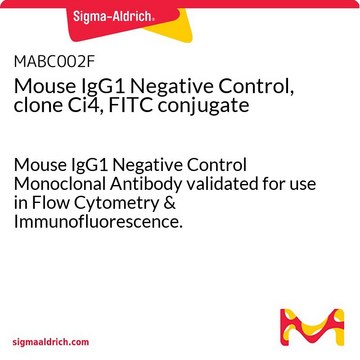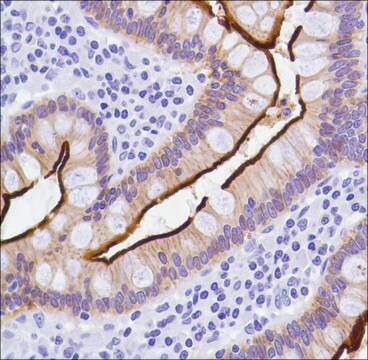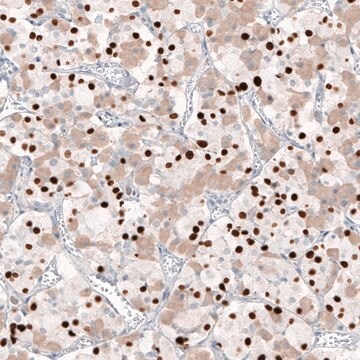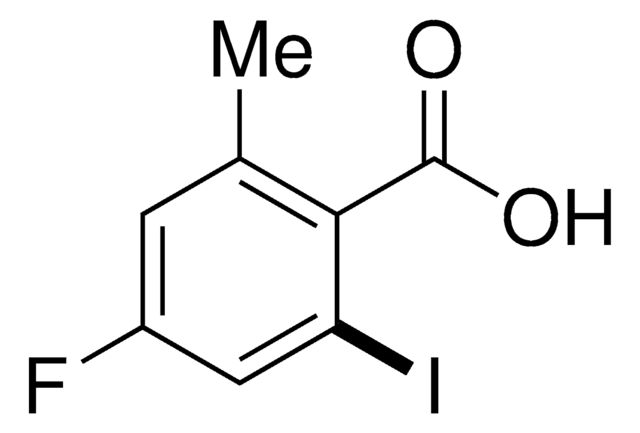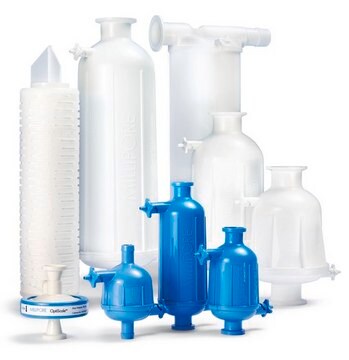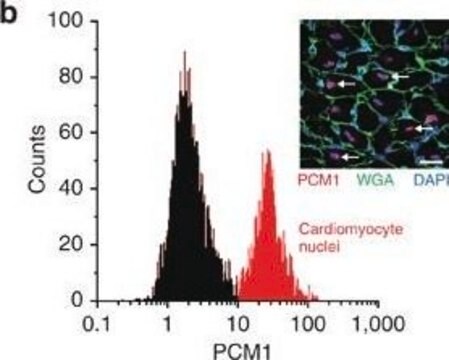MAB5256
Anti-Neurofilament 200 kDa Antibody, clone NE14
clone NE14, Chemicon®, from mouse
Sinônimo(s):
Anti-CMT2CC, Anti-NFH
About This Item
Produtos recomendados
fonte biológica
mouse
Nível de qualidade
forma do anticorpo
purified immunoglobulin
tipo de produto de anticorpo
primary antibodies
clone
NE14, monoclonal
reatividade de espécies
rat, pig, human
fabricante/nome comercial
Chemicon®
técnica(s)
immunohistochemistry: suitable
Isotipo
IgG1
nº de adesão NCBI
nº de adesão UniProt
Condições de expedição
wet ice
modificação pós-traducional do alvo
unmodified
Informações sobre genes
human ... NEFH(4744)
pig ... Nefh(100156492)
rat ... Nefh(24587)
Descrição geral
Especificidade
Imunogênio
Aplicação
Optimal working dilutions must be determined by end user.
Immunohistochemistry Protocol for Anti-Neurofilament 200 kD
Ideal specimens are obtained from frozen sections from shock-frozen tissue samples. The frozen sections are dried in the air and then fixed with acetone at -15 to -25°C for 10 min. Excess acetone is allowed to evaporate at 15-25°C. Material fixed in alcohol and embedded in paraffin can also be used, see (Altmannsberger et al., 1982). The antibody appears to react with tissue fixed in formaldehyde for a short time (10 min) (Debus et al., 1983). Other fixation conditions must be first tested by the investigator.
It is advantageous to block unspecific binding sites by overlaying the sections with fetal calf serum for 20-30 min at 15-25°C. Excess of fetal calf serum is removed by decanting before application of the antibody solution. Cytocentrifuge preparations of single cells or cell smears are also fixed in acetone. These preparations should, however, not be dried in the air. Instead, the excess acetone is removed by briefly washing in phosphate-buffered saline (PBS).
Further treatment is then as follows:
Overlay the preparation with 10-20 μL antibody solution and incubate in a humid chamber at 37°C for 1 h.
Dip the slide briefly in PBS and then wash 3 times in PBS for 3 min (use fresh PBS each time)
Wipe the margins of the preparation dry and overlay the preparation with 10-20 μL of an anti-mouse Ig-FITC or anti-mouse Ig-POD antibody and allow to incubate for 1 h at 37°C in a humid chamber.
Wash the slide as described above.
The preparation must not be allowed to dry out during any of the steps.
If using an indirect immunofluorescence technique, the preparation should be overlaid with a suitable embedding medium (e.g. Moviol, Hoechst) and examined under the fluorescence microscope. If a POD-conjugate has been used as the secondary antibody, the preparation should be overlaid with a substrate solution (see below) and incubated at 15-25°C until a clearly visible red-brown color develops. A negative control (e.g. only the secondary antibody) should remain unchanged in color during this incubation period. Subsequently, the substrate is washed off with PBS and the preparation is stained, if desired, with hemalum stain for about 1 min. The hemalum solution is washed off with PBS, the preparation is embedded and examined.
Substrate solutions:
Aminoethyl-carbazole:
Dissolve 2 mg 3-amino-9-ethylcarbazole with 1.2 mL dimethylsulfoxide and add 28.8 mL 0.05 M Tris-HCl, pH 7.3, and 20 μL 3% H 2 O 2 (w/v). Prepare solution freshly each day.
Diaminobenzidine:
Dissolve 25 mg 3,3′-diaminobenzidine with 50 mL 0.05 M Tris-HCl, pH 7.3, and add 40 μL 3% H2O2 (w/v). Prepare solution freshly each day.
Neuroscience
Neurofilament & Neuron Metabolism
Neuronal & Glial Markers
forma física
Armazenamento e estabilidade
Outras notas
Informações legais
Exoneração de responsabilidade
Não está encontrando o produto certo?
Experimente o nosso Ferramenta de seleção de produtos.
Código de classe de armazenamento
10 - Combustible liquids
Classe de risco de água (WGK)
WGK 2
Ponto de fulgor (°F)
Not applicable
Ponto de fulgor (°C)
Not applicable
Certificados de análise (COA)
Busque Certificados de análise (COA) digitando o Número do Lote do produto. Os números de lote e remessa podem ser encontrados no rótulo de um produto após a palavra “Lot” ou “Batch”.
Já possui este produto?
Encontre a documentação dos produtos que você adquiriu recentemente na biblioteca de documentos.
Nossa equipe de cientistas tem experiência em todas as áreas de pesquisa, incluindo Life Sciences, ciência de materiais, síntese química, cromatografia, química analítica e muitas outras.
Entre em contato com a assistência técnica